The appearance of moles on the feet, as well as on any other parts of the body, cannot be prevented by any special methods. However, some moles or nevi (according to official medical terminology) can cause significant discomfort in a person’s daily life. The appearance of a nevus on the foot is of particular interest to the owner, since the feet are the part of the body that is constantly exposed to external pressure due to walking and wearing shoes.
Causes of moles
The first moles in children appear all over the body after the first year of life. In this case, a newborn baby does not have moles on his body at all. The appearance of nevi throughout life depends on various factors. For example, teenagers discover new moles during puberty and intensive restructuring of the entire body; girls notice the appearance of nevi during pregnancy, as well as after breastfeeding and childbirth.
The list of other causes of moles includes:
- wrong lifestyle;
- lack of ultraviolet radiation in the body;
- hereditary problems;
- hormonal imbalances;
- oncology and diseases of internal organs;
- frequent stressful situations and overwork.
Typically, all moles in a healthy person appear by the age of 25. From about this age, the growth of existing and the appearance of new moles stops. The reverse process occurs: the nevi gradually turn pale and decrease in size.

The mechanism of appearance of moles
The principles of the appearance of nevi on the human body are no different, that is, a mole on the heel is no different from a mole on the cheek. The problem lies in the excess number of melanocytes produced in the dermis layers. Depending on how much excess of these substances was produced, one or several moles of varying sizes appear in a certain place. The pigment appears on the surface of the skin and is grouped into a single formation, which is called a nevus.
Unorthodox medicine, in turn, attributes the formation of moles in a specific place to an inflammatory process or disease that is associated with that part of the body. In this case, nevi are the result of the body’s fight against the disease. According to this theory, the appearance of a spot after 25 years is different from the formation of a mole in children, which may well be a cause for concern for its carrier. However, such a nevus is most often benign in nature, and therefore does not require surgical intervention.
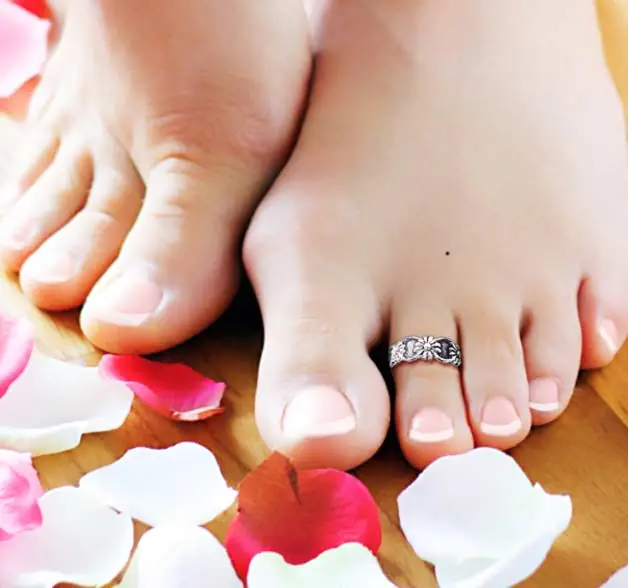
The danger of nevi on the feet
The worst place for a mole is the soles of the feet, because they are used every day for walking and are often susceptible to injury when wearing low-quality shoes. These factors together increase the risk of degeneration of an initially benign tumor into a malignant formation. An even more unfortunate place for a mole on the foot is the space between the toes.
The formation of nevi in such places should alert the owner and become a reason to visit a doctor. Those who have or have had relatives with skin cancer should definitely not delay consultation with a specialist. The main rule when detecting these formations is that you cannot self-medicate. Even understanding how to remove a mole at home is not considered a sufficient argument in favor of self-medication.
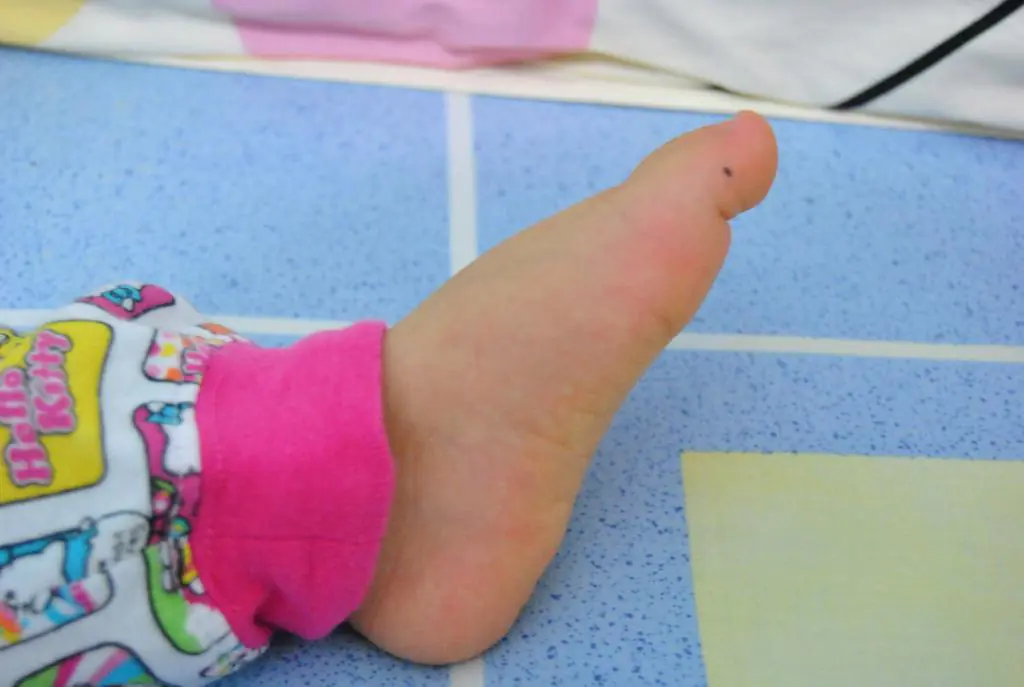
Negative signs of changing moles
Some changes in the condition of the nevus are a signal to immediately visit a doctor. Experts usually list the following as such signs:
- The appearance of a rim around the mole, which differs from it in color. This also includes the appearance of red, purple or black dots inside the mole itself.
- The mole periodically or constantly burns and itches.
- The spot changed its structure and became denser than before in the same place.
- Rapid increase in the size of the mole.
- Pain from a nevus in the center or along its edges.
- Blurred and asymmetrical boundaries of education.
Only a doctor can answer the question of whether it is necessary to remove moles with such signs. It is quite possible that these formations will simply require constant monitoring and observation in the clinic. As a rule, inspections of such formations take place once every three months.
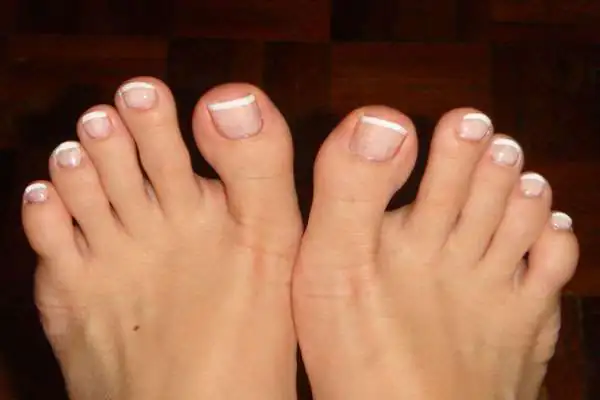
Types of nevi on the feet
Moles on the feet are divided into four types, including:
- Flat are harmless pigment spots that do not grow or change over the course of life.
- Hanging. Otherwise, they are also called “pedunculated moles.”
- Convex and large. Their growth and formation occur in the lower layers of the dermis. Due to this, hair that is located in higher skin layers can grow through them.
- Pigmented. Distinct in color, which varies from black or blue to red or pink.
Black and red moles are not a reason to panic, but require examination by a specialist. Angiomas, which are raised and pink in appearance, are mainly formed due to problems with hormonal levels and disruption of the normal functioning of the gastrointestinal tract. If a flat mole appears on the foot, then most likely it will not pose any danger, but you should monitor its condition as carefully as any other types of nevi.
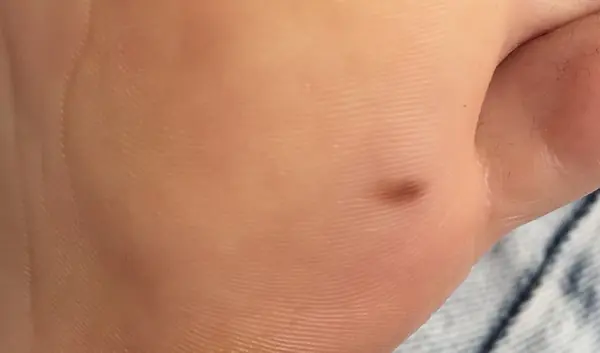
The danger of developing melanoma
Most people, unfortunately, tend not to be particularly attentive to moles that appear on their legs. Even plantar nevi are rarely paid attention to until they begin to seriously bother you. Determining whether moles in adults are dangerous or not depends on the location of the formation. Doctors say that the feet are the part of the body where the risk of nevi degenerating into malignant ones is quite high.
Melanoma (skin cancer) can develop at any age in anyone. In addition to heredity, there are a number of factors that make some people more predisposed to skin cancer. The risk is higher for those who have fair skin, as they are more susceptible to pigmentation.
Depending on the position of the mole on the foot, the risk of it degenerating into a tumor also varies. Thus, nevi on the outside of the foot and sole are much more dangerous than others. The worst location is considered to be between the third and first toes due to the higher risk of injury to the formation when running or walking.
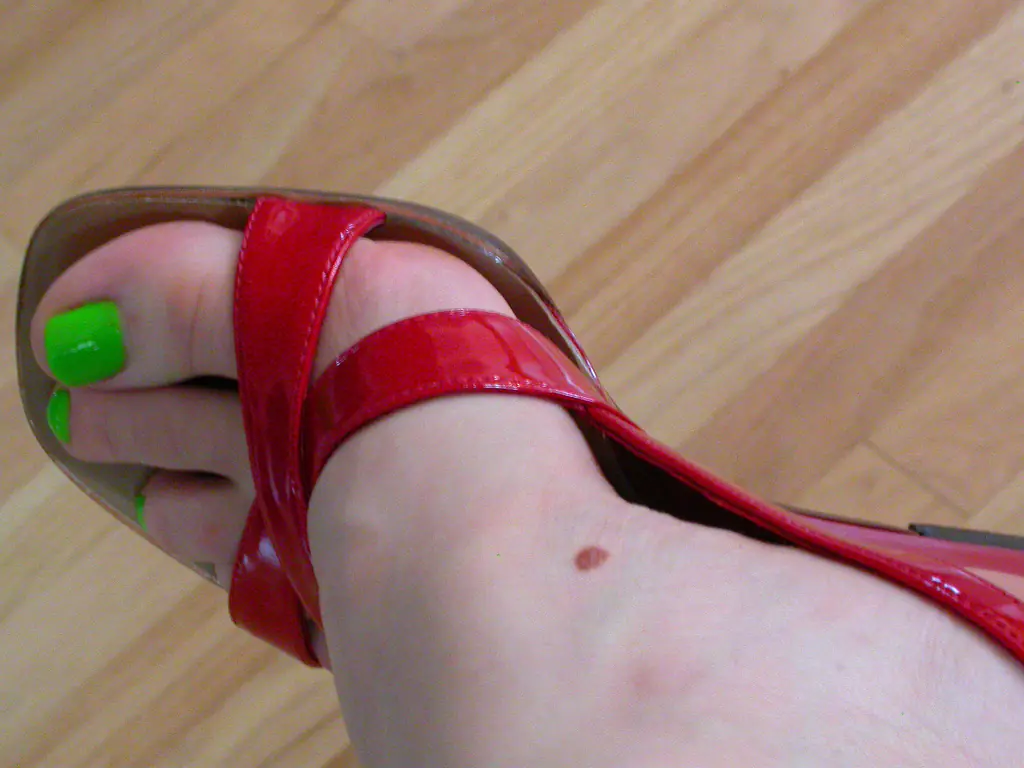
Which nevi need to be removed
Some signs indicate that you will have to resort to the help of a surgeon. To determine whether a mole needs to be removed, you must first familiarize yourself with the list of signs in the presence of which the doctor usually prescribes surgery:
- Unfortunate location of the mole. This includes the outside of the sole, fingers and feet.
- The presence of a bulge or “dangling leg”.
- Any noticeable signs of degeneration of the formation into melanoma.
- Interference with walking, parts of shoes getting caught in the nevus.
The postoperative period is not painless; it is the official reason for taking sick leave due to incapacity for work. A mole on the heel, foot, sole or toes, after removal, will leave a small wound that will need rest for speedy healing.
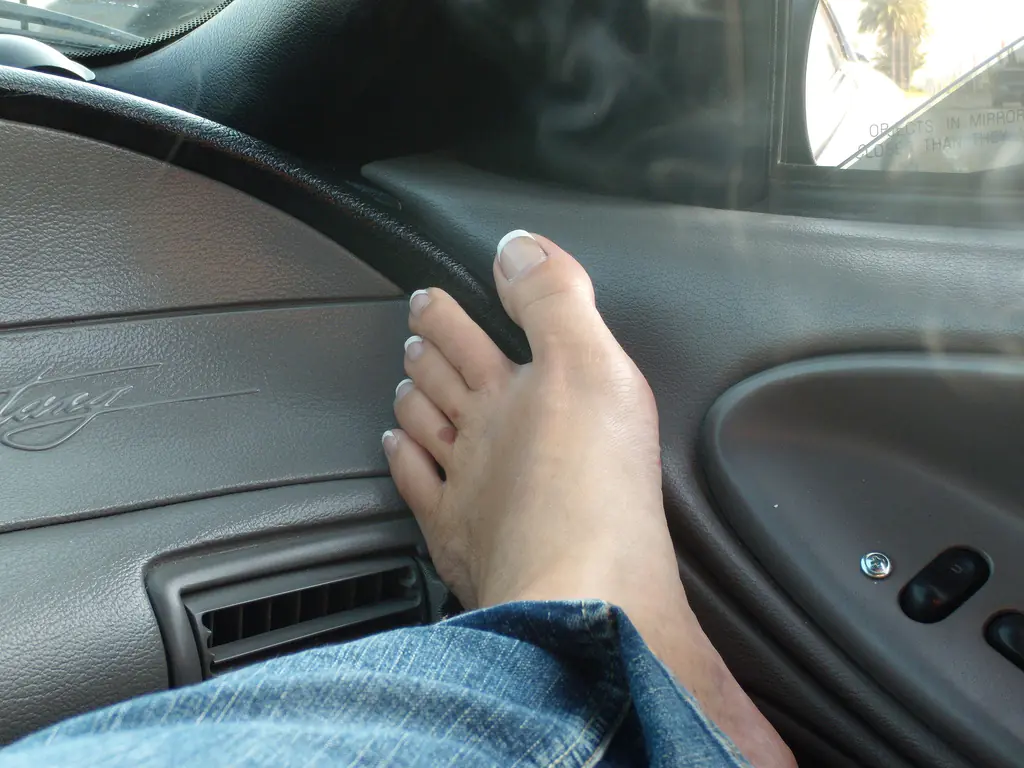
Healing period after surgery
For the first two weeks, the surgical wound will seem to “pull” in a calm state. In this case, there is no need to worry. The wound must be sutured, and mild discomfort implies active healing processes. During physical activity and walking, the discomfort may be somewhat more significant.
The excision will take approximately four to six weeks to heal completely from the date of surgery. It is strongly recommended to monitor any visual changes postoperatively. Thus, the risk of any possible complications after removing a mole on the foot is minimized.
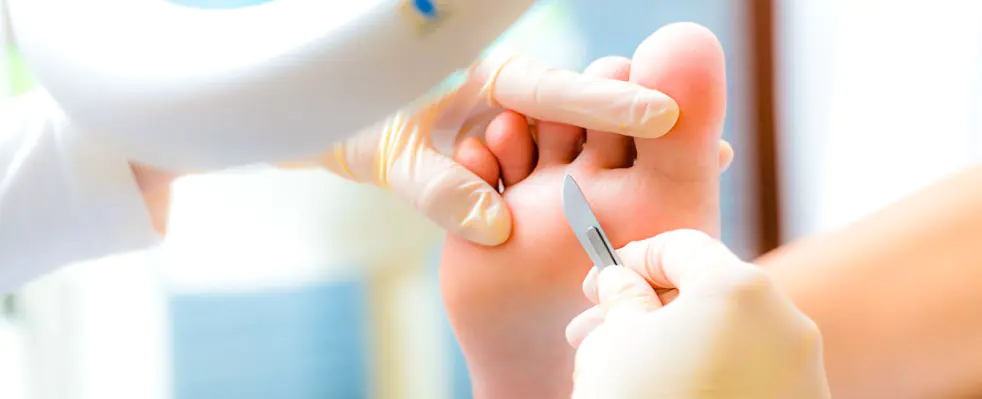
How to remove nevi on the feet
Modern medicine offers five ways to remove moles. The appropriate option is selected jointly with the attending physician; it depends on the type and characteristics of education:
- Laser removal. It has proven itself due to the complete absence of pain and rapid operation, safety and the impossibility of recurrence of the formation.
- Scalpel. It is performed under local anesthesia. The doctor captures some of the healthy tissue. After the operation, a scar remains.
- Cryodestruction. Removal occurs under the influence of ice, carbonic acid or liquid nitrogen. The operation is good because it is painless, but it is expensive.
- Electrocoagulation. Using the method of exposure to high temperatures, the mole is cauterized along with a healthy area of skin. Cannot be performed with high pain sensitivity.
- Radiosurgery. The nevus is destroyed due to the action of radioactive radiation. Completely eliminates moles and has a disinfecting effect. There are no complications.
Each method has its own advantages and disadvantages. But if you ask a doctor about how to remove a mole at home and whether it is worth doing, he will definitely recommend any available operation performed by professionals.
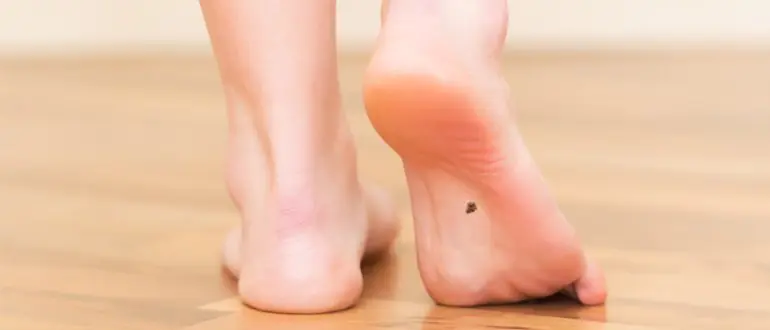
Most often, a mole (med. - nevus) on the foot appears as a result of the negative effects of ultraviolet radiation and hormonal imbalance. Let's find out in what cases you need to see a doctor, and when you should listen to folk signs.
What do moles on the foot mean?
A birthmark on the foot characterizes its owner as a restless person who is drawn to adventure. The remaining meanings of the sign depend on which leg the mark is located on.
The meaning of a mole on the right foot
The mark on the right foot speaks of a desire to travel and visit interesting places. Usually this aspiration remains a dream. Such a mole is a sign of chronic diseases.
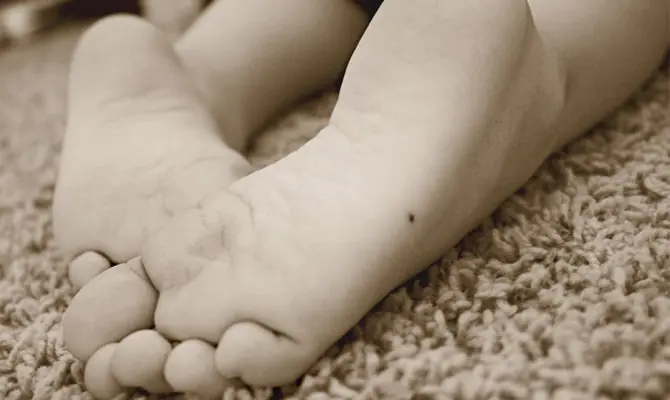
A woman with a birthmark on her right sole will become a good mother and wife. However, she will not see success in business. Her whole life is centered around her family.
A man with this mark has a number of advantages:
- foresight;
- insight;
- intelligence.
Most often, a guy with a mole on his sole is successful in his career.
The meaning of a mole on the left foot
A pigment formation on the left sole indicates developed intelligence. Such a person has a number of qualities:
A nevus on a lady’s left foot speaks of her variability and inconstancy. She does not like to study and prefers entertainment to work. For a man, this sign predicts wealth and happiness.
Dark moles predict failure in your personal life, while pink ones promise happiness in family relationships. Green nevi indicate the development of a serious disease in the body.
The meaning of a mole on the foot in women
The meaning of a mole differs between the two sexes. Women should pay attention to the color, size and number of moles:
- A bright red mole promises problems in family relationships. The lady is distinguished by her honesty and sincerity, but she does not see success in her personal life.
- Many bright marks indicate the girl’s love and temperament.
- A large mole on the sole means that a woman will become a mother of many children.
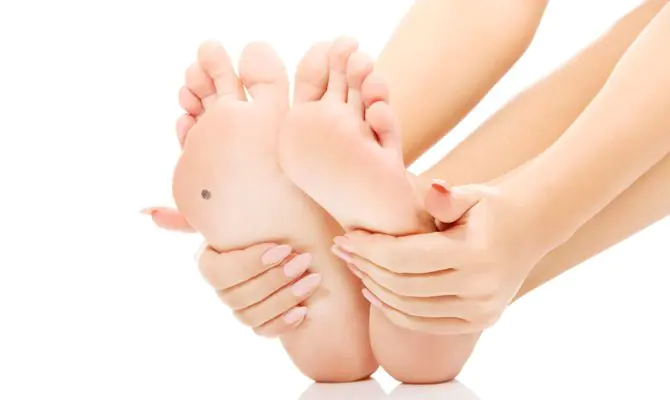
Important! Many moles on the foot indicate travel. This prophecy applies to both men and women.
If the birthmark is located in the center of the sole, this means a successful marriage. If the nevus is located near the thumb, this characterizes its owner as a wise and flexible lady with a calm character.
Much depends on which finger the birthmark is located under:
- Big. A person is prone to depression and deep despondency. He often feels sorry for himself and constantly makes the situation worse. Such a lady is not able to overcome adversity on her own.
- Second. A mole on the sole under this finger speaks of an assertive and self-confident person. She doesn't care what happens around her, the main thing in her life is her career and work. It is difficult for her to find a soul mate.
- Average. The mark indicates existing talents that will not bring results if they are not developed. Such a young lady should try herself in various fields.
- Fourth. A mole under it indicates an open and sociable personality. Such a girl is always in the center of attention and is able to find a common language with any person.
- Little finger. A spot on the small toe on the side of the sole of the foot speaks of a person’s phobias and fears. If the mole is very large, this is a sign of poor mental well-being.
A mark near the edge of the foot means a threat of heart and vascular disease. A mole between the center of the foot and heel is a sign of pathologies of the genital organs.
The meaning of a mole on the foot in men
A large nevus in a man is considered a sign of fidelity to his wife. Such a person is a reliable friend and business partner. Moles on both legs promise a happy marriage.
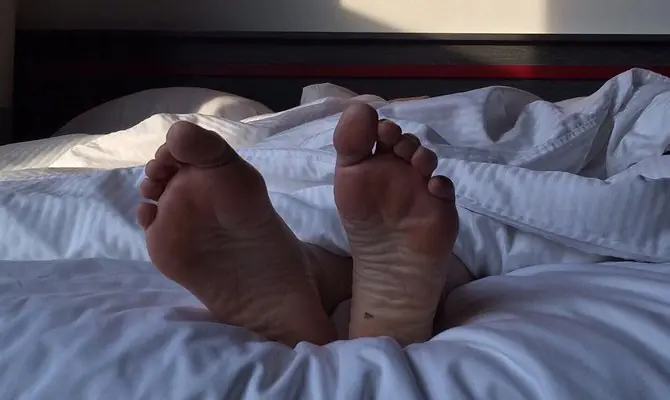
The guy with the pigment formations on his soles is pretty smart. He often falls in love and has many friends. He is also distinguished by other character traits:
- rich inner world;
- resourcefulness;
- caring;
- seriousness;
- romance.
Such men reach great heights and have a strong character. They will never leave a loved one in trouble and rarely need money. A mole on the right heel speaks of the insight of its owner.
Nevi have different meanings depending on their location on the foot:
- between the second and thumb – excessive fatigue, poor vision;
- between the third and second fingers - susceptibility to influenza, poor immunity;
- between the fourth and third fingers - the risk of developing varicose veins, hemorrhoids, and nasopharyngeal diseases;
- between the fifth and fourth fingers - a weak nervous system.
Birthmarks that influence fate usually have the following shapes: triangle, square, circle, cross or star.
Attention! A perfect circle is considered a good sign. An angular mole suggests the opposite.
What does medicine say about this?
Birthmarks on the foot can appear throughout your life. They usually stop occurring after age 25, when tissue growth stops. If the resulting formation grows, hurts, itches or changes color, this is an alarming sign.

There are several reasons for the growth of a mole:
- wrong lifestyle;
- stress;
- poor environmental conditions;
- heredity;
- excess ultraviolet radiation;
- pathologists of internal organs.
Important! Any mole on the foot can develop into melanoma. This happens especially often with nevi located on the feet and palms.
It is important to monitor the formation and contact a specialist if problems arise. If a spot grows on a child, it is worth showing it to the pediatrician. Fortunately, today there are many ways to get rid of unwanted nevus.
It is important to understand that birthmarks on the feet can have opposite meanings among different peoples. It is impossible to say which culture is closest to the truth. The main thing is to monitor your moles and listen to the advice of folk signs. In any case, most events and their outcome depend on the person himself.
If you believe, then moles on the legs and especially on the feet indicate that the person will be happy and successful. But is this really so? If we talk about birthmarks on the legs from a medical point of view, then there will be a slightly different opinion.
Moles on the feet appear quite often in both men and women. But not all people who have birthmarks on their skin are happy in life. On the contrary, some of them develop serious diseases. What do moles on the feet actually mean, are they dangerous? Should I be afraid and should I get rid of nevi?
Many people have moles on their feet. But what kind of moles can appear on this part of the body, and what influences their occurrence? What nevi pose a danger to human health?
Types of moles on the foot - right or left
There are five different types of moles that a person can develop on their feet. Let's list them. They can occur on both the left and right leg.
- Convex moles on the foot - these are nevi that are formed from melanocytes - cells that accumulate in the deep layers of the skin.
In size, these moles reach no more than 1 cm in diameter.
The surface of such a nevus resembles a tubercle rising above the skin. - Blue moles may be congenital or acquired. Their shades can be different - from blue to blue and even brown. The surface of such moles is usually smooth or slightly convex. The size of such formations in diameter can reach up to 2 cm.
- Pigmented large moles appear on the human body as soon as he is born and can increase with age, reaching a large size. The color of moles can vary from brown to black.
- Hemangiomas – these are the so-called hanging moles. Such nevi may most often have a brown tint. But there are also flat hemangiomas, the color of which is pink or red.
- Flat moles. Some people also call them pigment spots. Because they form on the surface of the skin, they resemble freckles in appearance, but are only slightly darker. Such moles do not change under the influence of sunlight and retain their color.
It doesn't matter which type of these moles you have on your feet.
Causes of nevi
What does it mean if nevi appear in the foot area? The skin of every healthy person contains cells such as melanocytes. Their main task is to protect the skin from exposure to ultraviolet rays.
With prolonged exposure to sunlight on the human body, melanocytes accumulate and, accordingly, the skin darkens and a tan appears. But due to various reasons, such as injuries and burns, as well as heredity, melanocytes, cells containing the pigment melanin, can appear on the body in the form of spots - freckles, the color and appearance of which changes in different seasons.
Moles most often appear when the amount of melanin in the layers of the skin increases. Some nevi are present on the human body from birth, and some are formed at any time under the influence of external factors.
The older a person is, the greater the likelihood of moles appearing on his body. Nevi can appear on the human body due to the following reasons:
- prolonged exposure to the sun;
- thinning or violation of the integrity of the skin;
- mechanical impact of clothing and shoes;
- hereditary predisposition;
- contact with chemicals that cause skin damage;
- inflammation of the skin;
- hormonal imbalance;
- age factor.
How can they be dangerous?
Most people are sure that moles do not pose any danger to human health and their appearance on the feet does not portend trouble. However, this can only be true if the mole really does not interfere, and given the fact that on the feet it can often be injured, increasing the risk of its degeneration into malignant. This will also depend on the age of the patient.
People who have light skin and are prone to pigmentation are more prone to the formation of malignant moles. In this case, improper treatment of the nevus can also aggravate the situation. In this case, getting rid of a mole on your own, as well as turning to traditional healers, is unsafe and exposes the person to even greater danger.
The location of the mole also affects whether it can cause harm to the human body. If the nevus is located between the fingers, then it is considered the most dangerous. If a mole is localized on the outside of the foot or on the sole, then the risk of injury and, as a consequence, the development of oncology increases.
If this happens, you will need to immediately consult a doctor. The nevus may need to be removed. Their appearance on the sole is very serious. Sometimes they can develop into a tumor and even lead to death.
If you have a mole on your foot, then You need to do the following to protect yourself from cancer:.
- Choose a good clinic with qualified specialists.
- Don't skimp on treatment if you need surgery.
- Seek help only from a qualified surgeon who has many good reviews.
- Be sure to follow all doctor's instructions and do not self-medicate.
- Watch for changes in the appearance of moles.
- An examination to determine the nature of the neoplasm is required for those people who have already had cases of skin cancer in their family.
As soon as possible You should consult a doctor if the mole is convex and located on the outside of the sole, on a finger or on the foot. Sometimes such nevi may even have a hanging leg, which constantly clings to clothes and shoes, causing discomfort while walking and putting on shoes.
After this education has been addressed, discomfort when walking may still remain for some time.
If you have had surgery to remove a mole, for several weeks afterwards you will It is necessary to avoid physical activity and spend as much time alone as possible. Complete healing of the place where the mole used to be will occur only a month and a half after the operation. You should also monitor the condition of the skin at the site of mole removal and, at the slightest suspicion of complications, you should seek help from a doctor.
How to get rid of it, including at home?
There are various ways to remove moles in medical settings. Only a specialist can understand which one is right for your case after a thorough examination and diagnostic procedures. Let us list the main methods of removing moles that are used in medical practice today.
You don’t need to trust the advice of your friends or your own opinion on this matter. They may be wrong.
Cryodestruction
There are several different ways in which moles are removed from the body. One of them is cryodestruction. This method is characterized by exposure of nevi to very low temperatures.
Moles are removed by exposing them to liquid nitrogen. It is capable of freezing a nevus in a matter of seconds and quickly destroying it.
Laser removal
Removing moles using laser - another method that may not suit everyone. Before the procedure, you must make an appointment with a doctor who will examine the mole and prescribe the necessary tests.
Laser mole removal is a quick procedure. The skin must first be treated with an antiseptic to prevent infection from entering the wound. Only after this can you proceed to removing the nevus.
Radio wave removal
The radio wave method of removing moles consists of influencing the mole with high frequency radio waves. This procedure does not cause harm to the human body. It is absolutely safe. After surgery, a person does not develop bleeding, healthy tissue is not damaged.
Also, a person will not have scars on his body. Cases where complications and side effects develop are very rare. It can be performed on absolutely any part of the body.
Medication
Today, there are many different medications that allow you to get rid of moles and papillomas. Before using these medications, you should always consult a specialist. Only if he allows this to be done, will it be possible to proceed to choosing a drug. The most effective for removing moles, as practice shows, are the following drugs:
Folk remedies
If you do not have the opportunity to remove nevi using a laser and other means, then you can try folk recipes at home. You shouldn’t expect effective action from traditional medicine recipes, but If you follow all the rules and also complete the full course of treatment, the moles will become paler or disappear altogether.
A garlic mask is good for removing moles. To do this, chop one clove of garlic with a knife or using a garlic press. The resulting paste must be applied to the mole, but do not forget to lubricate the surrounding skin with Vaseline before doing this.
The mole on which you apply garlic will need to be covered with a band-aid and not removed for 4-5 hours. This procedure must be carried out once every 4 days, and the course of treatment to achieve maximum effect should be 10 such procedures.
You can lubricate the mole with pineapple juice. Castor oil also helps in this case.
Prevention Information
There are a number of preventive measures that you can take to protect yourself from the appearance of new moles.
- Try to reduce your exposure to the sun. If you are on vacation at sea, try to spend some of your time in the shade.
- Do you need to do some work while outdoors? It's best to do things early in the morning or eveningwhen the sun is not so active.
- If you are outside in the heat, then Be sure to wear a hat, cap or take an umbrella with you. Special sunscreen cosmetic products will help avoid the negative effects of ultraviolet rays on the skin.
- Sometimes the cause of moles can be visits to the solarium. Therefore, this procedure is contraindicated for people who have a large number of moles on their bodies.
- Also need protect your skin from mechanical damage and exposure to chemicals.
- Handle cutting objects with care and exercise caution when near open flames. If you receive a deep wound, it must be carefully treated and stitched. Only properly provided medical care will contribute to the rapid healing of the wound, and as a result, scars and cicatrices will not form as well as moles.
Conclusion
Moles on our body, especially on our feet, can say something about the state of our body. Scientists have proven that the appearance of moles can sometimes indicate the presence of pathologies in the body. If the nevus increases in size and bothers you, then consult a doctor immediately so as not to cause even greater harm to your health. Indeed, in the future, such formations can degenerate into malignant ones and cause cancer.



